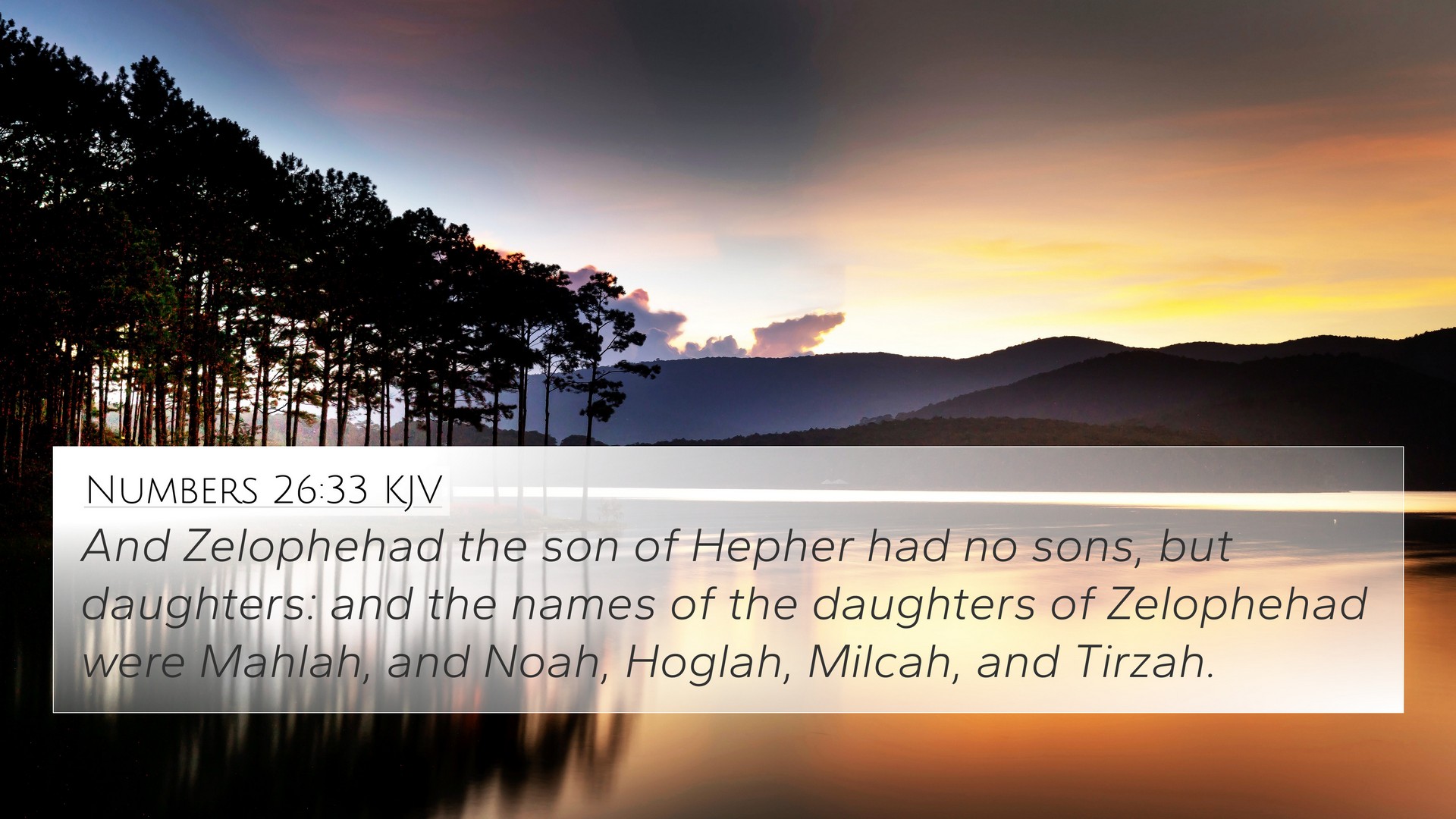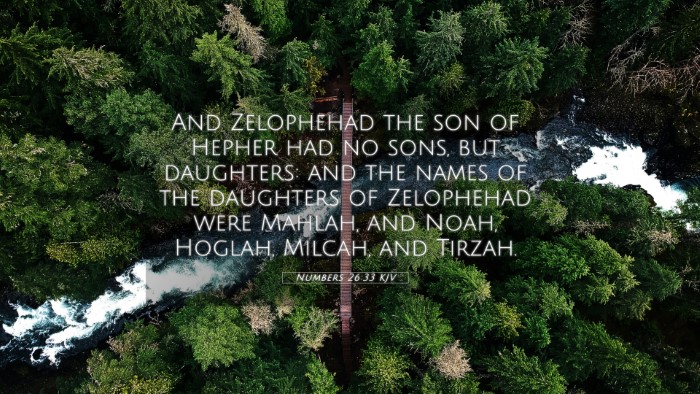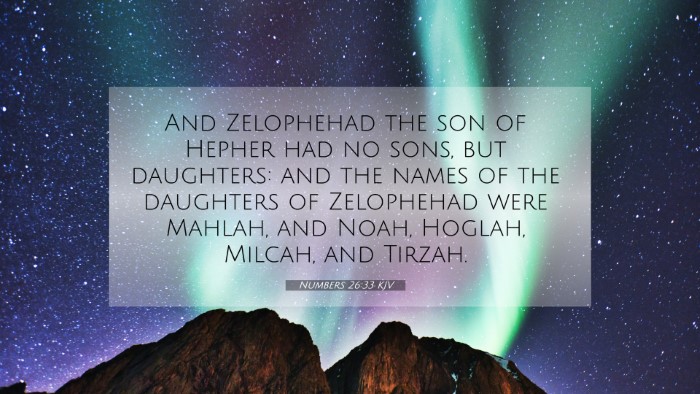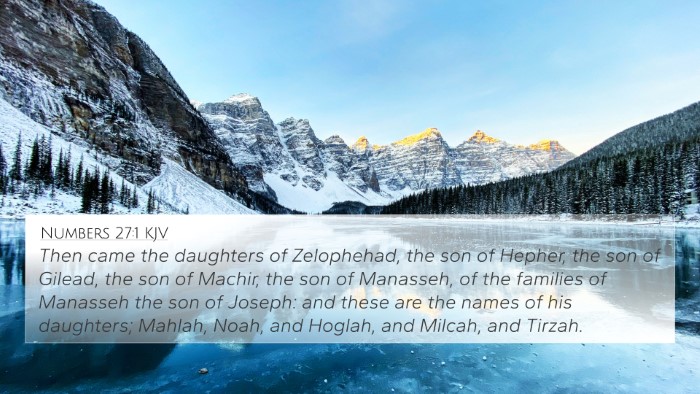Understanding Numbers 26:33
In this passage, the Bible provides a specific account of the lineage of Zelophehad, one of the Israelites who had no sons, thus emphasizing the importance of family inheritance laws. This commentary aims to deepen the understanding of this verse through insights from various public domain sources, including Matthew Henry, Albert Barnes, and Adam Clarke, to connect it within the broader narrative of scripture.
Summary of the Verse
Numbers 26:33 states: "And Zelophehad the son of Hepher had no sons, but daughters: and the names of the daughters of Zelophehad were Mahlah, Noah, Hoglah, Milcah, and Tirzah." This verse highlights the unique situation of Zelophehad’s family and initiates a discussion on the rights and duties of women in the inheritance process, which was quite significant in the cultural context of ancient Israel.
Commentary Insights
-
Matthew Henry's Commentary:
Henry emphasizes the significance of acknowledging women in the genealogical record. He notes that the inclusion of the daughters indicates God's provision for the family line, even when the customary patriarchal inheritance system appears to limit their rights.
-
Albert Barnes's Notes:
Barnes discusses the implications of the daughters' inheritance, reflecting on the legal stipulations that permitted daughters to inherit when there were no sons. This prefigures a broader understanding of equity in God's law.
-
Adam Clarke's Commentary:
Clarke examines the names given to the daughters, suggesting that each one reflects significant attributes or the history of the nation at that time, which adds a layer of cultural context to the understanding of their role within Israel.
Thematic Connections to the Scriptures
This verse in Numbers signifies critical themes such as inheritance, women’s rights, and family lineage. These themes resonate through various other passages in the Bible:
- Numbers 27:1-11: Discusses the legal precedent set by the daughters of Zelophehad, providing a case for women’s inheritance rights.
- Joshua 17:3-6: Highlights how the land was allocated to the daughters, further affirming their rights established in Numbers 26.
- Galatians 3:28: "There is neither Jew nor Gentile, neither slave nor free, nor is there male and female, for you are all one in Christ Jesus," relating to the overarching theme of equality in God's eyes.
- Proverbs 31:10-31: Illustrates the ideal woman and underscores the value of women in society, complementing the importance presented in Numbers 26.
- Job 42:15: "Nowhere in all the land were there found women as beautiful as Job's daughters," emphasizing their worth and value in the narrative.
- Luke 8:1-3: Points to active female participation in Jesus’ ministry, suggesting continuity in the recognition of women's roles.
- Ephesians 5:31: Connects family structures and relationships, reflecting God’s plan for harmony within the family unit.
Cross-Referencing Biblical Texts
Cross-referencing Biblical texts is an essential tool for understanding the full context and implications of specific verses. Here are several methods and guiding principles on how to effectively use Bible cross-references:
- Using a Bible Concordance: A concordance can direct you to similar verses that discuss related themes or concepts, enabling a deeper dive into scripture.
- Cross-Reference Bible Study: Pairing Numbers 26:33 with its contextual verses can illuminate meaning and reinforce understanding.
- Identifying Cross-Referencing Themes: Each mention of women's roles, rights, and familial lineage can be tracked across the Old and New Testaments for a more comprehensive view.
Conclusion
Numbers 26:33 serves as a pivotal verse demonstrating the complexities of inheritance laws and the elevation of women in the biblical narrative. By understanding this verse in its broader thematic connections and through a cross-referencing lens, one can appreciate the depth and intricacies of Biblical teachings. Engaging with commentaries enriches this exploration, providing a multi-faceted view of Scripture.




